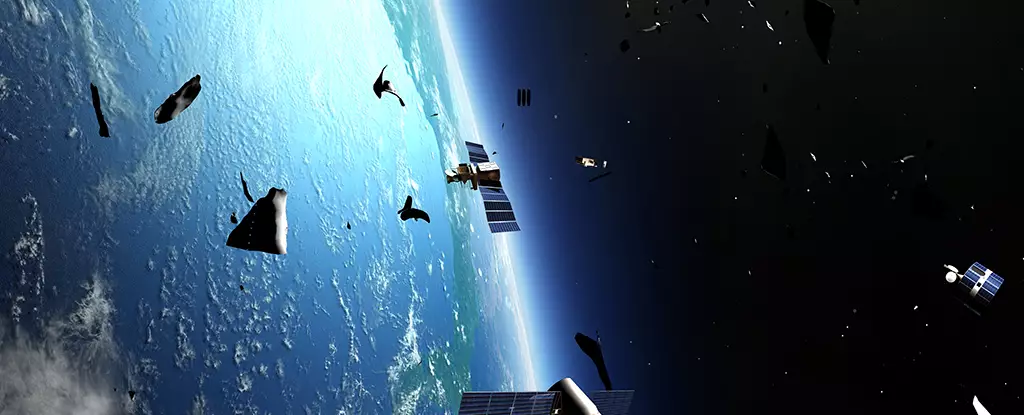The ever-expanding presence of space debris poses a unique and alarming threat to aviation safety. While there have been no recorded incidents of falling space debris colliding with aircraft, recent research suggests that the likelihood of such an event occurring is increasing. This phenomenon is primarily attributable to the surge in satellite launches and the presence of uncontrolled rocket bodies in Earth’s orbit. A study conducted by researchers from the University of British Columbia has shed light on this escalating danger, illustrating the need for urgent solutions to protect both aircraft and passengers.
The researchers employed flight data from around the globe to model how airplanes navigate through the airspace. They then contrasted this data with historical records of uncontrolled reentries of rocket bodies. The correlation between increasing satellite launches—like SpaceX’s expansive Starlink project—and rising air traffic has led to a notable uptick in potential collision risks. Notably, the study emphasizes that regions surrounding major airports face a 0.8% chance annually of being affected by uncontrolled reentries, with this risk escalating to 26% in busy areas, particularly in the northeast United States, northern Europe, and parts of the Asia-Pacific.
The implications of these statistics are staggering. Aviation authorities must grapple with not only managing air traffic but also the added unpredictability posed by space debris. In an era where air travel is becoming ever more frequent, maintaining safety in the skies is paramount.
The Aerospace Corporation has quantified the threat further, estimating the odds of a plane colliding with space debris to be approximately 1 in 100,000 as of 2021. While this may seem low at first glance, the reality is that even minuscule fragments of debris, weighing as little as one gram, can severely compromise the integrity of an aircraft. An incident involving such a fragment could lead to catastrophic outcomes if it were to strike critical components like an engine or the aircraft windshield.
As air traffic becomes more congested due to the increased risk of space debris, regulatory bodies faced with tough choices must now consider the necessity of temporarily closing airspace. This decision can lead to significant repercussions, such as delays and cancellations, creating a cascade of operational challenges for airlines and impacting travelers worldwide.
Amid these challenges, aviation authorities find themselves in a precarious position, balancing the need for safety against the economic ramifications of shutting down airspace. The uncertainty surrounding the trajectories of uncontrolled debris complicates this decision-making process, resulting in the potential for extensive areas of airspace to be rendered unusable as a precaution.
A notable example occurred in 2022 with the uncontrolled reentry of the Long March 5B rocket body, which prompted widespread airspace closures. Such events highlight the necessity for more reliable methods of controlling rocket reentry to minimize harm and ensure that commercial air travel can proceed without heightened risks associated with falling objects.
The researchers advocate a proactive approach to mitigate the rising threats posed by space debris. They offer a critical solution: the implementation of controlled rocket reentry systems. Although the technology is available, less than 35% of launches currently employ these safety measures, placing the onus of ensuring safety back on the aviation sector. Collaboration is vital; both governmental bodies and private aerospace companies need to unite in prioritizing the safe management of space operations.
The urgency of this situation cannot be overstated. With more than 2,300 rocket bodies currently orbiting the Earth—many of which will eventually face uncontrolled reentry—it is imperative to act now rather than waiting for a disaster to spur necessary changes. By investing in safer practices and embracing innovative technologies, the aviation industry, alongside the space sector, can work towards safeguarding our skies from the hidden threats of space debris.


Leave a Reply